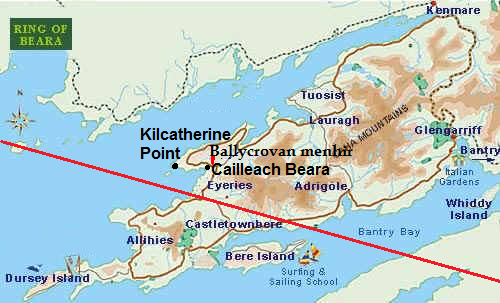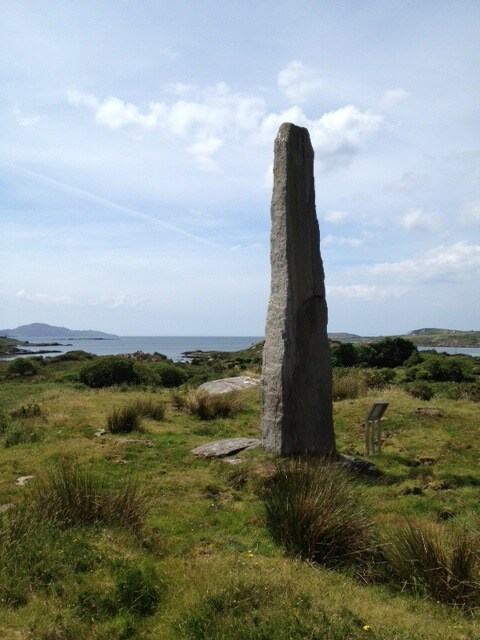'Burgh island in Devon?'
Probably but not according to Irish legend or Wiki.
Wiki tells us that it means 'Bear Island'. And at least one online Irish dictionary gives us 'Bear' for Bear. Although the usual word for bear is 'math' or the generic 'Art' used in Welsh and other European languages.
https://en.wikipedia.org/wiki/Bere_Island
The word is spelled 'Bere' on the map so if we are going to stick to English forms why not call it 'Barley Island'? Or perhaps bear left here lads island or you'll run aground or maybe find buried treasure.
Irish legend tells us the tale of an Irish prince setting sail for Spain and coming back with a Spanish wife called Beara and gave the island her name in her honour.
'A Beara legend demonstrates the age-old traffic between the peninsula and the outside world. Eoghan mór, a 2nd century king of Munster was driven out of ireland by Conn of the Hundred Battles. Eoghan spent nine years in exile and married Beara, daughter of a Spanish king. Returning to regain his territory, he landed on a peninsula, which he named in honour of his wife.'
http://www.bearatourism.com/PDF%20files ... rt1%29.pdf
Looking at the map again it does look a bit like Cornwall with Bere Island a bit Isle of Wightish stuck in the middle of the south coast.
https://en.wikipedia.org/wiki/Dursey_Island
While just off the 'Lands End' bit we have Dursey Island. Could this be another Dur, Dor Durdle placename?
Wiki tells us that it is also called Baoi Bhéarra or Oileán Baoi in Irish. Baoi apparently means Buoy. Baoithe means unsteadiness or foolishness. Off the west coast there are tidal races and three offshore rocks called Bull, Cow and Calf. There is also a Crow Head.
The area is apparently the start of the E8 trans Europe walk to Turkey. It crosses to North Wales and then eastwards across England. It's a pity they didn't recommend a megalithic sailing route taking in all the old points of interest on the way. There must be an EU fund somewhere waiting to be milked.
Or perhaps the BBC will large out with the largesse. They're repeating an 'experiment' to see how Stonehenge was built using 'modern' methods which apparently an improvement on the methods the used the last time they tried it. Although I believe they didn't go to Wales to chip the stones out of the bedrock with antlers and bits of rock and drag them all the way to the 'launch site'.
http://www.bbc.co.uk/news/uk-england-wiltshire-30041330

Click the above logo to return to the main site






